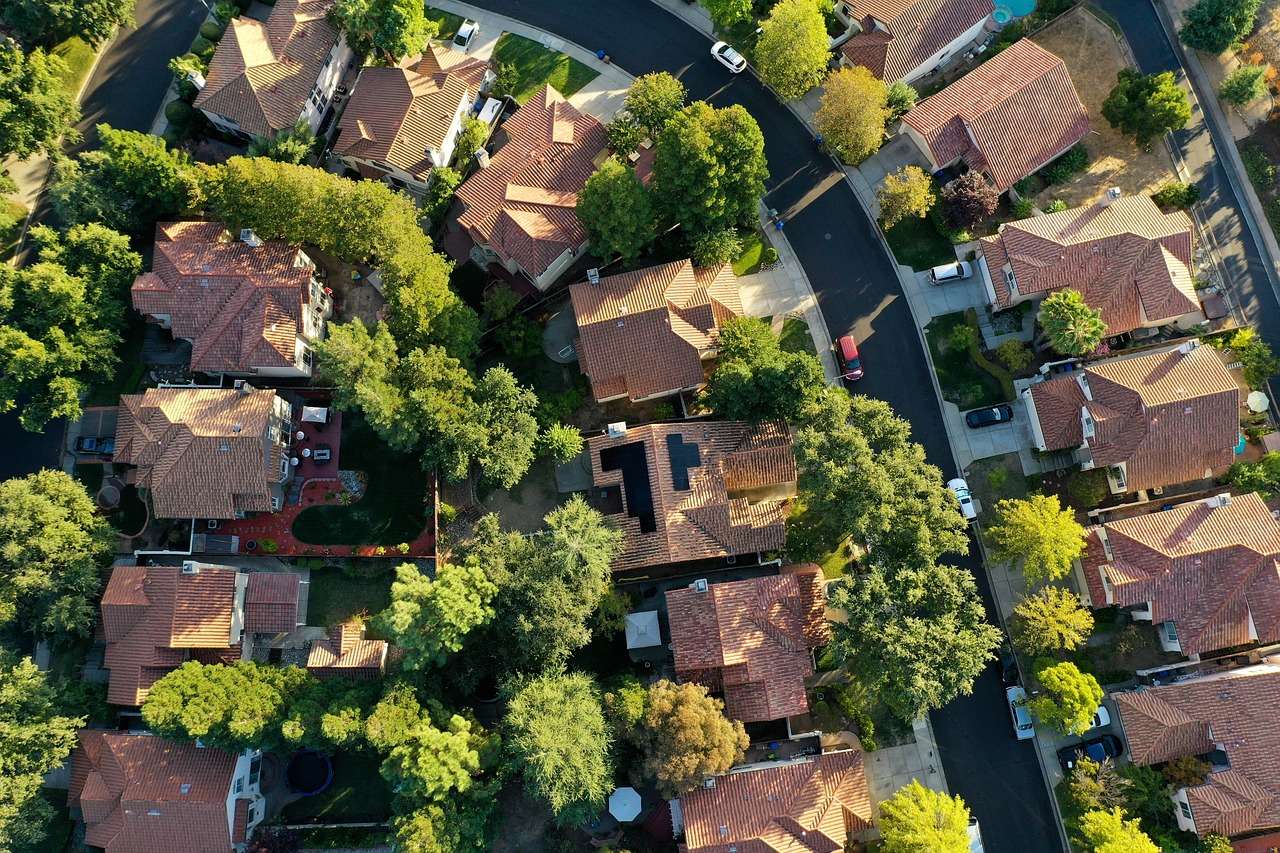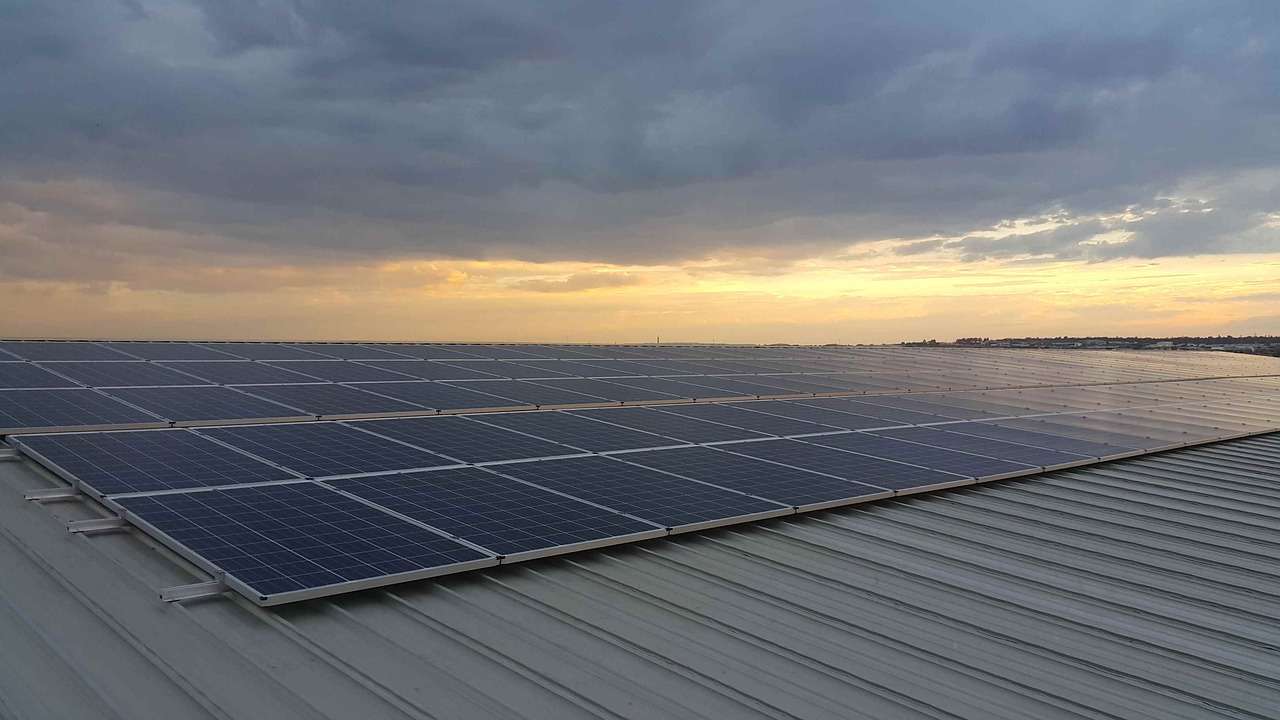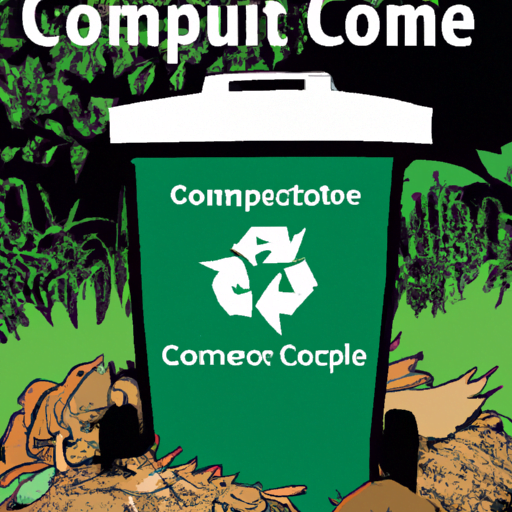Living off the grid is an enticing idea that promises freedom from conventional societal norms. But amidst the allure of self-sufficiency, one question commonly arises: how do off-gridders manage their trash and recycling? In this article, I will explore the ingenious ways in which individuals and communities who have ventured off the grid tackle this fundamental aspect of modern life. From creative reusing techniques to innovative composting methods, the off-grid community has developed remarkable strategies to ensure a sustainable and eco-friendly approach to waste management. Join me on this fascinating journey as we dive into the world of off-grid living and discover how trash and recycling are conquered in the wilderness.

Trash management
Reducing waste
As an off-grid individual, I take trash management seriously. One of the primary ways I approach this is by reducing waste generation. By being mindful of my consumption habits, I can significantly minimize the amount of waste that ends up in landfills or incinerators. This means being conscious of the products I purchase, opting for items with minimal packaging, and buying in bulk to reduce packaging waste.
Composting
Composting is a fantastic way to divert organic waste from landfills and create nutrient-rich soil for gardening. I utilize various composting methods, including traditional composting, vermicomposting, and bokashi composting. Each method has its benefits and can accommodate different types of organic waste. By composting, I not only reduce waste but also contribute to sustainable agriculture and a healthier ecosystem.
Incineration
While not my preferred method of waste management, incineration can sometimes be a viable option for off-gridders. However, it’s essential to approach incineration cautiously due to its potential environmental impact. When considering incineration, I take into account the benefits, such as reducing waste volume and generating energy, as well as the challenges, like air pollution and emissions. If I choose to incinerate waste, I ensure I use the right equipment and adopt safety precautions.
Burying or landfills
Although burying waste is not the most sustainable solution, off-gridders may find themselves with limited options in remote areas. When burying waste, I follow specific steps to minimize environmental harm. I dig a pit or trench that is deep enough to prevent animals from accessing the waste, avoiding contamination of groundwater sources. To further protect the waste, I cover it properly with layers of soil and regularly monitor the site for any potential issues. Additionally, I make sure to comply with local regulations and dispose of hazardous materials separately.
Recycling
Creating a recycling system
Implementing a recycling system is crucial for off-gridders like me who aim to reduce waste and promote sustainability. To create an efficient recycling system, I first identify the recyclable materials commonly used in my household, such as glass, plastic, paper, and metal. Once I have a comprehensive list, I designate specific recycling bins or areas for each material to make sorting easier. By establishing a system, I can effectively streamline the recycling process and involve my entire household in practicing sustainable habits.
Sorting and cleaning recyclables
Sorting and cleaning recyclables correctly is essential to ensure the quality and efficacy of the recycling process. I separate different materials, such as plastic bottles from glass jars and aluminum cans from paper, to prevent cross-contamination. Additionally, I remove any contaminants, such as food residue, labels, or lids, that may hinder the recycling process. Clean recyclables not only improve the value of the materials but also reduce the effort required by recycling centers to recycle them properly.
Finding recycling centers
Locating recycling centers near off-grid areas can be a challenge, but it’s not impossible. I research and identify local recycling facilities that accept the specific recyclable materials I generate. Additionally, regional drop-off points or collection events can be useful for recycling items that aren’t accepted in regular curbside recycling programs. In some cases, mail-in recycling programs can also be an option, especially for harder-to-recycle items. Online resources are valuable for finding comprehensive information on recycling centers nearby.
Transporting recyclables
Transporting recyclables efficiently and responsibly is crucial to minimize the environmental impact of waste management. I ensure that I have adequate storage containers to hold recyclables before transporting them to recycling centers. By consolidating trips and maximizing each transport load, I reduce fuel consumption and carbon emissions. Collaboration with local communities is also essential, as carpooling or organizing community pick-up events can help make recycling transportation more efficient and eco-friendly. Exploring alternative transportation methods, such as bicycles or electric vehicles, is beneficial in reducing environmental harm further.

Reusing and repurposing
Repurposing materials
Part of my approach to sustainable waste management involves repurposing materials whenever possible. By getting creative and thinking outside the box, many items we would typically discard can find new life and purpose. For example, glass jars can be used for storage or crafts, old furniture can be refurbished, and clothing can be upcycled into new garments or repurposed as cleaning rags. The possibilities are endless, and by repurposing materials, I reduce waste and save money in the process.
Repairing and maintaining items
Another way I minimize waste is by repairing and maintaining items rather than immediately discarding them. Whether it’s fixing a broken appliance, patching up clothing, or repairing furniture, regular maintenance and basic repair skills can extend the lifespan of possessions. Not only does this reduce waste, but it also prevents unnecessary consumption and saves money. Embracing a culture of repair and valuing durability contributes to sustainable living and reduces the need for replacements.
Shared resources
Off-grid communities often have a strong sense of cooperation and collective responsibility. One way this manifests is through sharing resources. The practice of sharing tools, equipment, or other items can significantly reduce waste and unnecessary purchases. For example, instead of each household owning their own power tool, we can share a communal tool library. By sharing resources, we promote a sense of community and foster a more sustainable lifestyle.
Freecycling
Freecycling is a wonderful concept that aligns perfectly with off-grid living and sustainable waste management. It involves giving away unwanted items to others who may find them useful, instead of throwing them away. Online platforms dedicated to freecycling allow individuals to connect and offer items they no longer need or want. Through freecycling, I can declutter my space, reduce waste, and give someone else the opportunity to benefit from items that still have value.
Composting
Types of composting
There are several composting methods that off-gridders like me can implement. Traditional composting involves creating a pile or bin where organic waste, such as fruit and vegetable scraps, leaves, and garden trimmings, decompose naturally with the help of microorganisms. Vermicomposting, on the other hand, utilizes worms to break down organic matter quickly, producing nutrient-rich worm castings. Lastly, bokashi composting allows for the fermentation of organic waste, enhancing the breakdown process. Choosing the right composting method depends on space availability, time constraints, and personal preference.
Building a composting system
To build a composting system, I first designate a space in my off-grid property for the compost pile, bin, or worm farm. It’s essential to find an area that is easily accessible but doesn’t create odor or attract pests. I then gather the necessary materials, such as carbon-rich “browns” (e.g., dried leaves, shredded paper) and nitrogen-rich “greens” (e.g., kitchen scraps, grass clippings), to create a balanced compost mix. Layering these materials and periodically turning the pile to aerate it promotes decomposition. It’s crucial to monitor moisture levels and add water or adjust the compost mix as needed.
Composting dos and don’ts
To ensure successful composting, I follow a set of dos and don’ts. Dos include adding a variety of organic waste, maintaining the right moisture level, and turning the compost pile regularly. I also include items like eggshells, coffee grounds, and yard waste in my compost. However, there are also several don’ts, such as avoiding meat, dairy, or oily products, as they can attract pests and slow down the decomposition process. It’s important to be mindful of what materials can and cannot be composted to maintain a healthy and efficient composting system.
Utilizing the compost
Once the compost is ready, I utilize it in various ways. It serves as a nutrient-rich soil amendment for my garden beds, improving soil fertility and plant health. The compost can be mixed into the soil before planting, used as a top dressing around existing plants, or even brewed into compost tea as a natural, organic fertilizer. By utilizing the compost, I close the loop of organic waste and contribute to the health and productivity of my off-grid homestead.

Burning waste
Benefits and challenges
While incineration is not my primary waste management method, there are certain benefits and challenges associated with burning waste. Incineration can significantly reduce the volume of waste, minimizing the space required for landfilling. Additionally, waste-to-energy incineration can generate electricity or heat. However, incineration also poses challenges, such as air pollution from emissions, the release of hazardous substances, and potential impacts on human health. It’s crucial to thoroughly evaluate these factors and consider local regulations before deciding on burning waste.
Safety precautions
If incineration is chosen as a waste management method, it’s essential to take safety precautions. I ensure that the incinerator is designed for safe use and follows all necessary safety guidelines. Adequate ventilation is crucial to prevent the buildup of harmful gases, and fire safety measures, such as fire extinguishers and smoke alarms, should be in place. Proper handling and storage of flammable materials are also necessary to prevent accidents. By prioritizing safety, I can mitigate potential risks associated with incinerating waste.
Choosing the right incinerator
Selecting the right incinerator is essential for effective waste management. Factors to consider include the type of waste to be burned, the volume of waste generated, and the desired functionality of the incinerator. Incinerators can range from simple, small-scale designs suitable for personal use to larger, more sophisticated systems. It’s important to choose an incinerator that meets environmental standards, promotes air pollution control, and offers efficient waste combustion. Researching reputable manufacturers and seeking expert advice can guide the decision-making process.
Utilizing the ashes
The ashes generated from waste incineration can serve various purposes. They can be used as a soil amendment or component in construction materials. Ashes contain essential nutrients such as potassium, phosphorus, and calcium, which can enrich soil fertility. However, it’s crucial to test the ash for heavy metal contaminants before applying it to the soil. Proper handling and storage of ashes are also essential to prevent environmental contamination. By utilizing the ashes thoughtfully, I can make the most of a waste management technique that would otherwise result in complete waste disposal.
Burying waste
Digging a pit or trench
When burying waste as an off-grid individual, I begin by digging a pit or trench. The size and depth of the pit depend on the amount and type of waste I need to dispose of. It’s essential to ensure that the pit is deep enough to prevent animals from accessing the waste and causing contamination. I follow safe digging practices and avoid areas near water sources or sensitive ecological areas to minimize environmental harm.
Covering and protecting the waste
Once the waste is placed in the pit or trench, I cover it properly to ensure it remains contained and protected. Layers of soil are added over the waste to prevent odors and discourage animals from digging it up. By properly covering the waste, I limit its exposure to the environment and reduce the risk of contamination or unwanted spread.
Complying with local regulations
Off-grid waste management includes responsibly handling waste according to local regulations. It’s essential to familiarize oneself with regional requirements surrounding burying waste and obtain any necessary permits or approvals. Understanding permitted waste types, burial depths, and procedures helps ensure compliance and avoid legal issues. Complying with local regulations demonstrates a commitment to responsible waste management and environmental preservation.
Addressing environmental concerns
While burying waste may be a viable option in certain off-grid situations, it’s important to address environmental concerns associated with this method. Waste decomposition can release greenhouse gases, impacting climate change. To mitigate this, I focus on reducing waste generation and diverting organic waste to composting or other sustainable methods. Additionally, I monitor the burial site to detect any signs of environmental degradation, such as contaminated soils or compromised groundwater quality. By being vigilant and proactive, I can minimize the environmental impact of burying waste.

Creating a recycling system
Identifying recyclable materials
In order to establish an effective recycling system, I first identify the recyclable materials that are commonly used in my household. This includes items like glass bottles and jars, plastic containers, paper and cardboard, aluminum cans, and steel or tin cans. By recognizing which materials can be recycled, I can ensure these items are properly sorted and directed towards recycling centers instead of being disposed of as waste.
Designating recycling bins/areas
To facilitate recycling in my off-grid home, I designate specific recycling bins or areas for different types of recyclable materials. This could include having separate containers for glass, plastic, paper, and metal near the kitchen or other convenient locations. By clearly marking and organizing these bins or areas, it becomes easier for both myself and other household members to sort and deposit recyclables correctly.
Educating household members
An integral part of creating a successful recycling system is educating everyone in the household about the importance of recycling and the proper procedures for sorting recyclables. I make sure to communicate the significance of recycling, emphasizing the positive impact it has on the environment and the potential for reducing waste. By providing clear guidelines and reminders, everyone becomes conscious of their responsibility and actively participates in recycling efforts.
Tracking recycling progress
To gauge the effectiveness of my recycling system, I track the progress and improvements made in recycling efforts over time. This can be achieved by keeping a record of the volume and types of recyclables collected each week or month and comparing these numbers to previous periods. By tracking progress, I can identify areas for improvement, set goals, and celebrate achievements. This information also helps me evaluate the effectiveness of educational initiatives and determine if any adjustments are necessary.
Sorting and cleaning recyclables
Separating different materials
When preparing recyclables for recycling centers, it’s essential to separate different materials to prevent contamination. I ensure that glass, plastic, paper, and metal items are sorted into their respective categories. This allows recycling centers to process the materials efficiently and ensures that recycled products meet quality standards. By separating materials properly, I help maintain the integrity of the recycling process.
Removing contaminants
Contaminants, such as food residue, labels, or lids, can hinder the recycling process and reduce the value of recyclable materials. I make sure to remove any added elements that are not part of the recycling stream. This includes rinsing food containers to remove any remaining traces of food, peeling off labels, and removing caps or lids that might be made of a different material. By removing contaminants, I ensure that the recycling process can proceed smoothly and effectively.
Cleaning recyclables
While removing contaminants is important, it’s also essential to clean recyclables appropriately. For example, rinsing out glass bottles or plastic containers before recycling ensures that food residues are eliminated, reducing the risk of contamination. However, it’s important to balance the need for cleanliness with water conservation, especially in off-grid situations with limited water resources. Striking a balance between cleanliness and water usage is key to ensuring the cleanliness of recyclables without unnecessary waste.
Avoiding certain materials
Not all materials are suitable for recycling, and some can even disrupt the recycling process. I ensure that I avoid including items like plastic bags, Styrofoam, or heavily waxed paper, as many recycling centers do not have the capability to process them efficiently. Understanding what materials to exclude from the recycling stream is just as important as identifying recyclable items. By avoiding inappropriate materials, I help maintain the effectiveness of the recycling process and prevent unnecessary waste.
Finding recycling centers
Local recycling facilities
Finding local recycling facilities is crucial for off-gridders who want to ensure their recyclables are properly processed. I research nearby recycling centers that accept the specific recyclable materials I have and investigate their drop-off or pick-up procedures. Having local options reduces transportation distances and associated environmental impacts while supporting the local economy and waste reduction initiatives.
Regional drop-off points
In areas where direct access to recycling centers may be limited, regional drop-off points can be a valuable solution. These drop-off points are often located in public spaces or designated sites and allow individuals to bring their recyclables to one central location. Although they may involve additional travel, regional drop-off points provide an alternative to landfilling and help ensure that recyclables are properly managed.
Mail-in recycling programs
For certain items that are more challenging to recycle or for individuals living in remote areas, mail-in recycling programs can be a great option. These programs typically provide specific instructions and pre-paid shipping labels for mailing in hard-to-recycle materials, such as batteries, electronics, or certain plastics. Although this option may require more organization and planning, it allows off-gridders to responsibly dispose of items that cannot be recycled through regular channels.
Online resources
Online resources, such as dedicated recycling websites or community forums, can be invaluable for finding comprehensive information about recycling centers. These resources often provide databases or directories that help locate recycling facilities by location and accepted materials. Utilizing online platforms allows me to explore nearby recycling options and stay informed about recycling initiatives and developments in my off-grid area.
Transporting recyclables
Storage and transportation logistics
When transporting recyclables to recycling centers, it’s important to have adequate storage containers to hold the recyclables before delivery. I use sturdy bins or cardboard boxes that are specifically designated for recyclables to keep them organized and prevent spillage or damage during transport. Additionally, it’s crucial to consider the size and weight of the recyclables to ensure safe and efficient transportation.
Minimizing environmental impact
To minimize the environmental impact of transporting recyclables, I aim to consolidate trips and maximize each transport load. By waiting until I have a sufficient amount of recyclables before making the trip, I reduce fuel consumption and carbon emissions associated with transportation. Carpooling or collaborating with neighbors can also help share transportation costs and further minimize environmental impact.
Collaborating with local communities
In off-grid areas, collaborating with local communities is essential in optimizing recycling transportation logistics. By coordinating with neighbors or nearby households, we can establish regular collection days or designate drop-off points within the community. This not only saves time and resources but also fosters a sense of communal responsibility and encourages collective efforts toward sustainable waste management.
Alternative transportation methods
Exploring alternative transportation methods is a sustainable approach to recycling transport. For short distances, bicycles or hand carts can be used to transport recyclables. Not only does this reduce energy consumption and emissions, but it also promotes physical activity and a healthier lifestyle. In off-grid areas, where vehicular transport might be challenging or restricted, alternative transportation methods offer practical and eco-friendly solutions.




